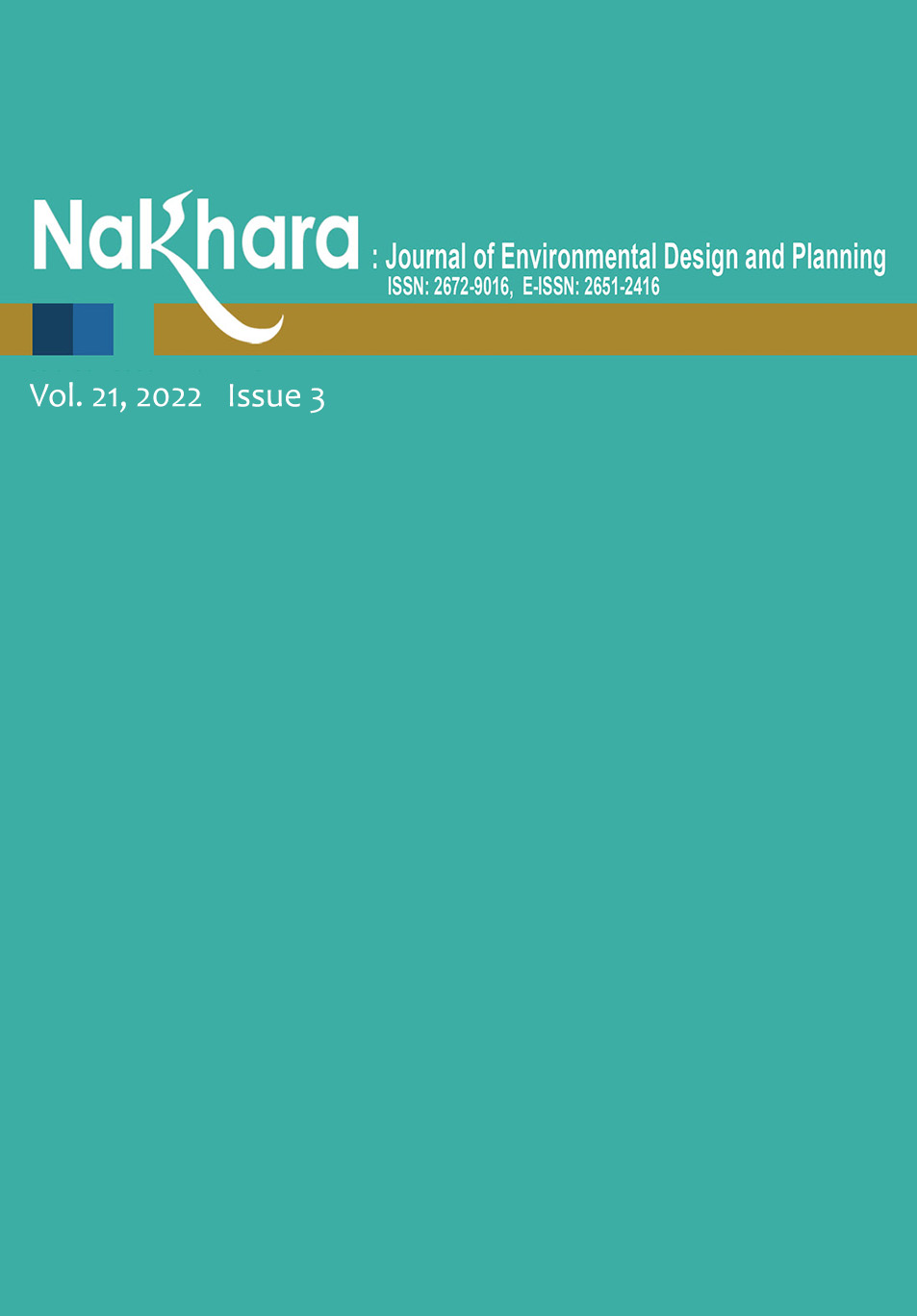Identifying Plant Species and Their Usage for Landscape on the Historical Mural Paintings of Nan, Thailand
Main Article Content
Abstract
Nowadays, marketing influences landscape design plant selection in Thailand, with less concern for ecology, culture, or local identity. Archaic murals showing historical contexts offer extraordinary evidence related to the effort to understand the history of plants in the geographic area. It is highly informative to study whether plants on murals correlate with plants that were part of daily life at the time that the murals were created. The study of Thailand's famous murals at Phumin and Nongbua temples is the first complete identification of plant species in Tid Buaphan's murals in Nan province. It aims to (1) document the plants on the murals in a database, (2) categorize and analyze them in order to identify their species, and (3) validate the plant species and study how they were used for landscape design in various contexts.
The murals at both temples were examined, photographed, and coded for documentation in a database. The collected pictures were classified by physical characteristics and identified by investigating the Tai Lue scripts and Lord Buddha allegories, which are represented as stories on the murals. Moreover, some realistic paintings were analyzed and compared with botany literature and discussed in interviews with a botanist.
There are 259 paintings in 76 groups at Phumin temple, and 560 paintings in 138 groups at Nongbua temple. The results show 35 hypothetical species, including eight exotic species. Plants are represented in various contexts, including residences, towns, and agricultural and natural areas. The identified species were potentially used for consumption, daily use, ornamentation, or a representions of religious or cultural beliefs. This research suggests plant species that reveal their historical value and can be used for current landscape design that seeks to express the historical and cultural values of Nan province.
Article Details

This work is licensed under a Creative Commons Attribution-NonCommercial-NoDerivatives 4.0 International License.
References
Boonart, K. (2011). Khrōngkān ʻanurak ton yāng nāp ri wana thanon sāi Chīang Mai - Lamphūn [Yang conservation project of Chiangmai-Lanphun road]. Provincial Office of Natural Resources and Environment Kamphaeng Phet. http://lib.mnre.go.th/lib/achievement/a1253.pdf
Bopearachchi, O. (2020). Brahmā at the Ajapāla banyan tree: Re-examining paintings at the Sulamani temple, Bagan. Religions, 11(4), 84–88.
Chatakul, P. (2017). Plant species in archaic mural painting for cultural landscape design. In A. Boonyapas, A. Anambutr, S. Limthongsakul, V. Davivongs, S. Sukolratanamwtee, D.Thaitakoo, V.Thumwimol, P. Yhumwimol, C.Dankittikul, D. Boonkham, A. Menakanit, A. Aruninta, N. Osiri, S. Hongvityakorn, C. Arayanimitskul, & N. Klongvessa (Eds.). Conferrence Proceeding 2017 IFLA Asia Pacific Reginal Congress, Bangkok, Thailand (pp. 324–334). https://issuu.com/tuboonyanant/docs/2017_ifla_apr_proceeding_boo
Chueasaart, S. (1995). Thailư̄ - lānnā thưng sip sō̜ng pan nā [Tai Lue - Lanna to Xishuangbanna: Tai Lue legend continuation]. Phayao: Chiang Kham district education office.
Dejwongya, J. (2018). Chittrakam fā phanang wat phūmin čhangwat Nān : Kānsưksā khranglā sut [Mural Paintings of Wat Phumin in Nan: A Recent Study]. Muang Boran Journal, 29(4). https://www.sarakadee.com/m-boran/2003/10-12/index.htm
Francissen, F. P. M. (1987). A Century of Scientific Research on plants in Roman Mural paintings (1879-1979). L' Erma di Bretschneider.
Imsamraan, S., & Boonyananta, S. (2020). Kānsưksā rư̄ang lao " khantha kumān chādok " nai čhittrakam fā phanang wat čhangwat Nān [A study of “Khat-ta-na-ku-marn”: the Narrative in the Murals of Phumin Temple, Nan province]. Silpa Bhirasri, 8(1–2), 224–243.
Kaewpenthong, C. (2013). The analytical comparative study of mural paintings at Phumin temple and Wat Nong Bua Nan province [Master's thesis, Silpakorn University]. SURE. http://www.sure.su.ac.th/xmlui/handle/123456789/13358?attempt=2&&locale-attribute=th
Majesty, D. P. and A. C. of the C. of the O. C. of the C. C. (2001). Watthanatham phatthanākān thāng prawattisāt ʻēkkalak læ phūmpanyā čhangwat Nān [Culture, historical development, Identity, and Wisdom of Nan province]. Fine Arts Department. https://www.finearts.go.th/chiangmailibrary/view/18252
Northern Thai Sangha. (2009). Panyāsa chādok [Pannasajakata]. Athon printing
Pächt, O. (1950). Early Italian nature studies and the early calendar landscape. Journal of the Warburg and Courtauld Institutes, 13(1), 13–47. http://www.jstor.org/stable/750141
Prabripoo, W. (2009). Nan mural painting. Nan Riverside Art Gallery.
Sabernig, K. A. (2014). On the history of the murals in the medical college at labrang monastery. Asian Medicine, 7(2), 358–383. https://doi.org/10.1163/15734218-12341257
The Forest Herbarium. (2014). Chư̄ phan mai hǣngprathēt Thai tem samiti nan [Thai plants name Tem Smithinand] (2014 revis). The Forest Herbarium, National Park, Wildlife and Plant Conservation Department.
Voyiatzi, C., Tamoutseli, K., Voyiatzis, D., & Bakirtzi, O. (1999). The olive tree in ancient Greek life and art. Acta Horticulturae, 474(May), 763–766. https://doi.org/10.17660/ActaHortic.1999.474.159
Wimolkasem, S. (2019). Thō̜trahat wat phūmin [Phumin temple decoded]. Ink berry Nan limited.
Yi, C. H. (2012). Sylvanic trees institutionalized in the ancient Northeast Asia: Cultural and environmental significance of Dan-tree and Sa-tree. Forest Policy and Economics, 22, 28–39. https://doi.org/10.1016/j.forpol.2012.01.005

